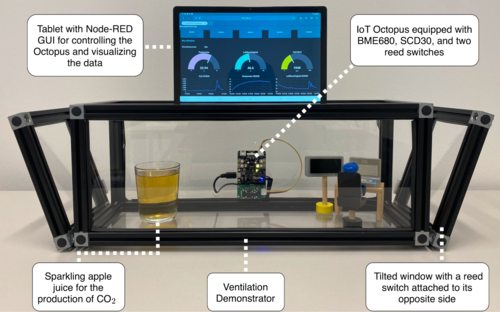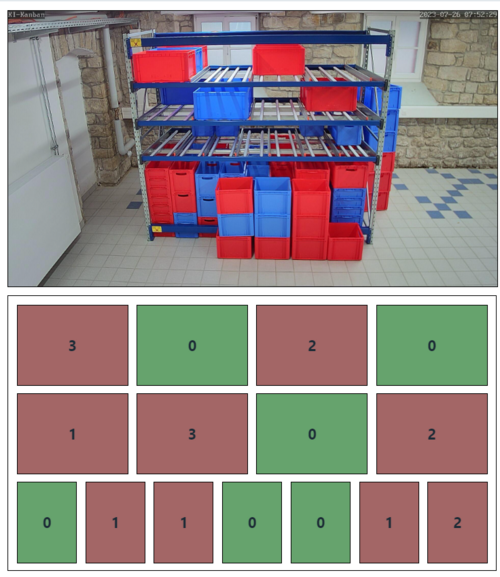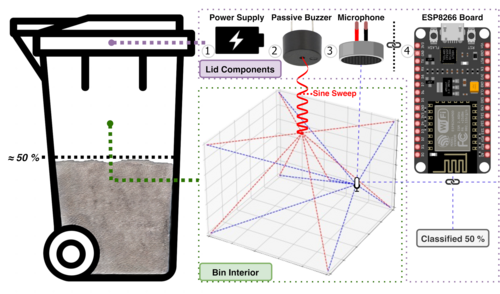
The demonstrator simulates a room equipped with two windows and provides ventilation-related environmental data via a sensor array as a time series. The data is recorded and controlled by an ESP microcontroller equipped with two gas sensors. The sensors enable the measurement of humidity, air pressure, temperature, volatile organic compounds (VOCs) and CO2 content. The demonstrator provides data from which the current ventilation status can be predicted using various AI algorithms. The aim is to recognize the status of the windows and determine whether they are being ventilated in order to provide appropriate ventilation recommendations.
See[CFG+24] for more information on the ventilation demonstrator.

In a case study on image recognition, a simple webcam provides images of a flow rack with a different number of bins in each lane. As the bins move forward after being placed in a lane, the number of bins can be determined at the back of the rack. In order to analyze different lane sizes and camera angles, the images of the entire rack were divided into smaller sections showing only a single lane. Using different AI systems, the number of bins in each lane can be determined.
See [FCG+24] for more information on the image recognition demonstrator.

A demonstrator for generating and analyzing acoustic signals. The aim is to determine the fill level of a container using acoustic sound waves. The central unit, which is mounted on the lid, houses a microcontroller that can generate acoustic signals with a buzzer and record the reflected sound waves with a microphone. Recording begins before a modulated, acoustic sinusoidal signal is emitted via the buzzer. This means that ambient noise can also be recorded for noise reduction. The method makes it possible to calculate the impulse response of the room. A Raspberry Pi is used for data processing.
See [CFU+24] for more information on the Spacial Impulse Response Demonstrator.
Further case studies and demonstrators are being developed, for example on the topic of Edge AI (see e.g. [BFN+24]).
You are leaving the official website of Trier University of Applied Sciences